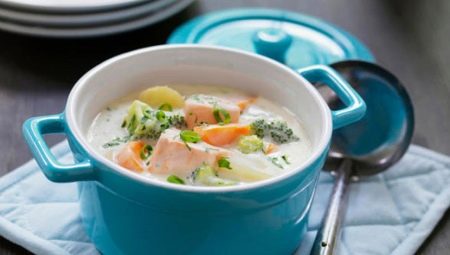Tureen - dishes that are not in every kitchen. Not everyone considers it necessary to use this capacity, considering it a relic of the past and excess. But those who prefer to pour the fragrant first course into the tureen and take it out to the common table, assure - this serving has many advantages.
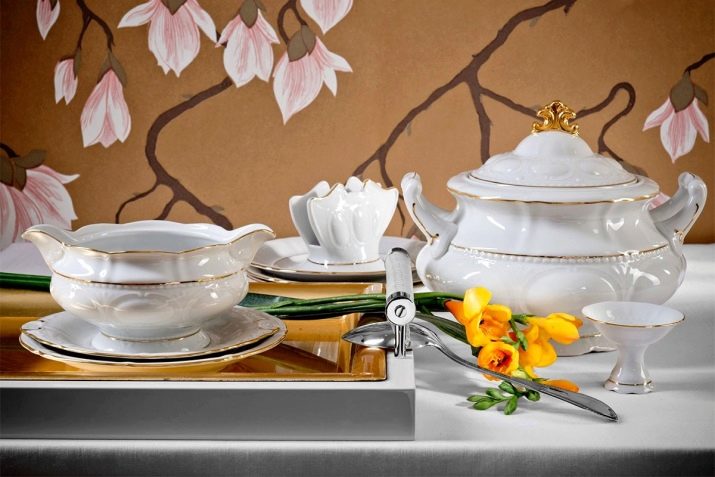
Features
The word “soup bowl” today means two things: the first is roomy dishes, where you should pour soup or broth in large quantities (for all diners), the second is portioned dishes for soup. Both that and other definition will be true.


But portioned dishes are sometimes called the word "bouillon", which, in principle, is also true.
More often, tureen is called the total capacity served on the table instead of the pan in which the first dish was cooked. Of course, the pan on the table does not look appropriate, violates the harmony of the serving and generally crosses out the aesthetics of eating. But the matter is not only in the beauty of serving: in tureens, the first dish is infused and does not cool.
In the old days, she used to know tureens, and since the distance from the kitchen to the dining room was decent, carrying soup in plates to the table was both uncomfortable and impractical. He was cooling off corny. Today, dishes for serving first courses remain a companion to elegant serving. And the soup itself looks more appetizing in beautiful dishes.
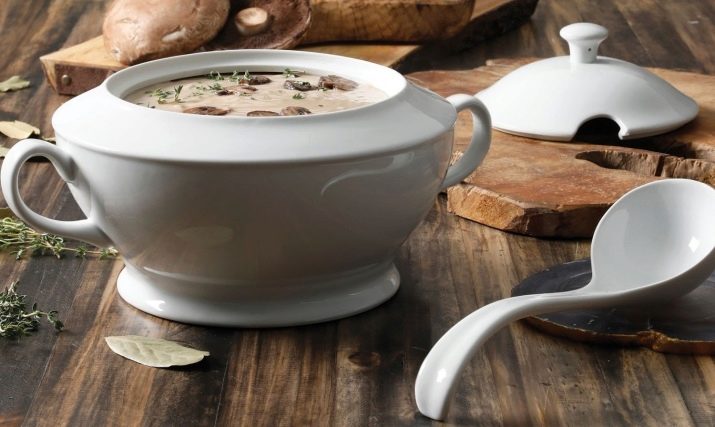
General rules for serving soups.
- Transparent broths and vegetable light soups served in a cup with one or two handles, less often in a soup plate. They eat them with a dessert spoon, the cup is turned with the handle forward. Such types of first courses are served less often in the tureen, puree soups are served in the same way. Sometimes a “pocket” is attached to a cup - a place for croutons.
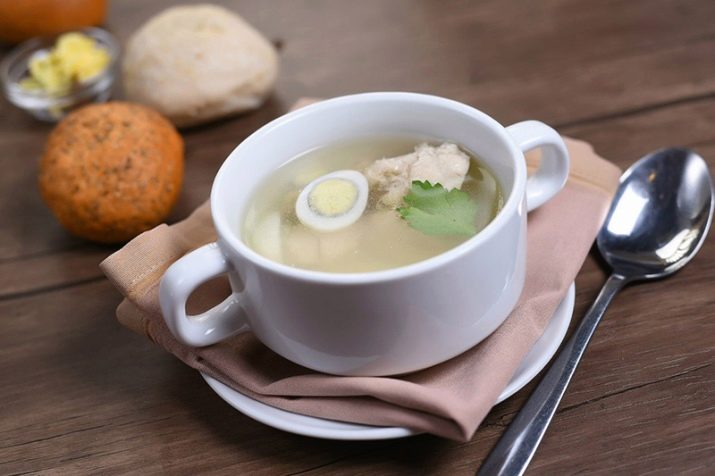
- Dressing soups (cabbage soup, borscht, as well as pickle, hodgepodge, thick vegetable soup) are eaten from deep soup plates with a tablespoon. These dishes are often served in a beautiful common tureen. An individual soup plate needs a stand.

- National soups more often served in ceramic / clay pots. The pot also needs to be taken out on a stand plate or on a wooden stand.
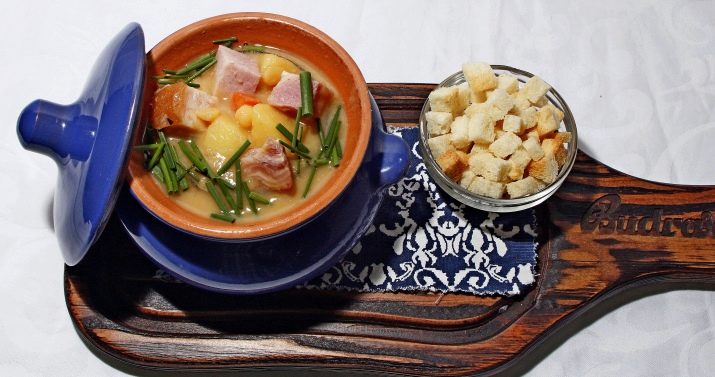
- Family dinners Is the best way to serve tureen. According to etiquette, she should stand on the table, which is located next to the dining table. But they rarely adhere to this rule now, because the tureen is often placed in the center of the table.
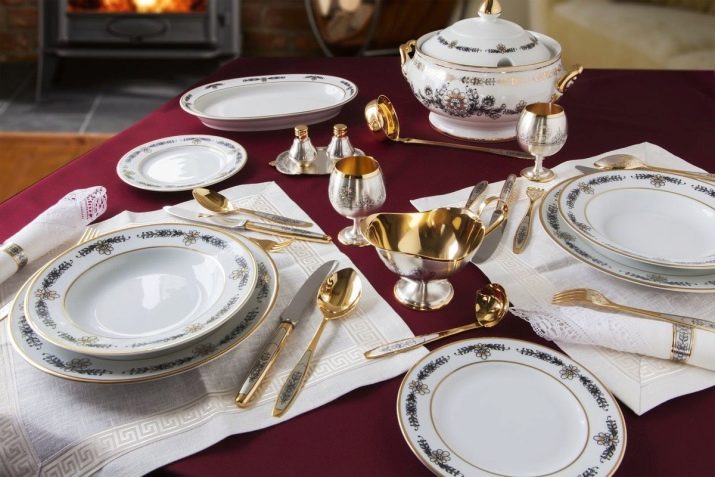
There may be a special recess in the tureen, thanks to which a special spoon for portioned filling will remain in the container.
Kinds
Capacities for serving first courses can look different, have characteristic features. The standard tureen is not just a deep plate with two handles, but a capacious beautiful container with a lid. The volume of the dishes also varies and can be from 2 to 5 liters or more. If you plan to use the dishes for ordinary family meals, and your family is small, then a modest tureen of 2.5 liters will be enough.

If lunches with first courses are planned to be more crowded, you need to take more dishes - from 3.5 liters.
If we talk about a soup cup, they can be:
- reminiscent of portioned pots;
- trapezoidal, with handles expanding upward;
- cylindrical;
- in the shape of a mug;
- designer.
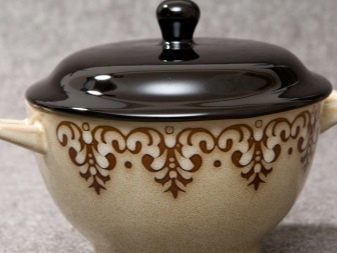
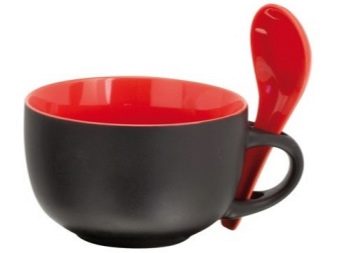
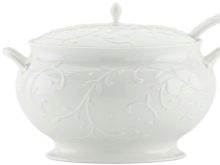
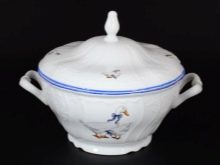
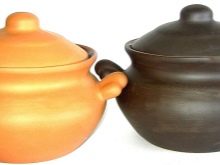
In recent years, a mug-tureen has gained particular popularity. This is partly due to a decrease in servings: people began to monitor nutrition more and reduce their diet. Mugs-tureens, unlike deep plates, did not give the opportunity to get enough "to the limit", to regulate the amount of consumed product. And in many cases, such dishes are more suitable for serving, as it looks nice and modern.
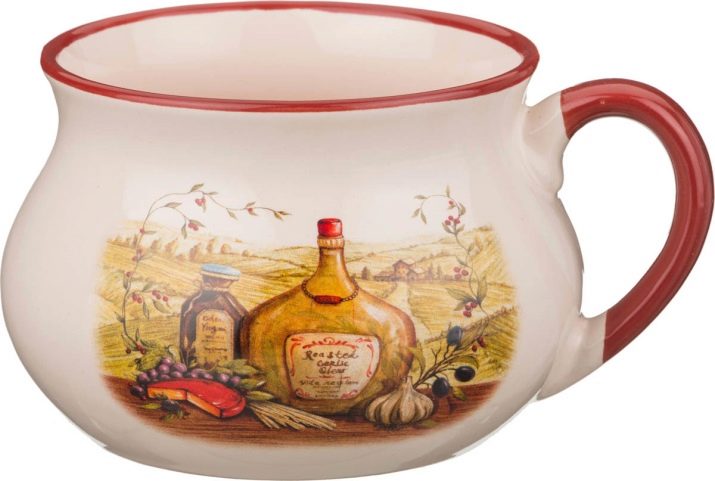
But the supply of tureens on a stand gradually lost its relevance: less and less housewives use stand plates and their substitutes. And there was a replacement for the classic volumetric tureens with a lid - in many families their electrical counterparts “took root”. But in them, as in disposable tableware, there is not that charm of the classic serving, unhurried lunches in the company.
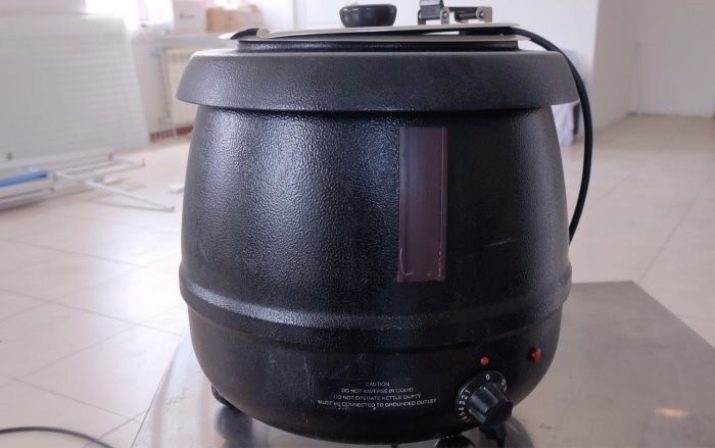
At least culinary critics note that humanity is beginning to miss such measured meals, and fast lunches and dinners "at the TV" will soon become a bad manners.
Materials
In shape, the “common” tureens are similar to each other - their roundness has variations, but not so significant. But the materials for the manufacture of such dishes are very different.
- Clay. The traditional "root" material, warm and very homely. Clay tureens with lids are usually small, they can replace the frypot, as they are suitable for cooking in the oven.

- Ceramics. The option is no less worthy than the one described above. It retains heat for a long time, it looks both modern and vintage (there are different models), inexpensive in price. Perhaps the most popular were tureens in the form of a pumpkin or a dish, on the lid of which a hare, a duck, a chicken "hid". Such dishes are suitable for serving first courses, and for roast, for example.
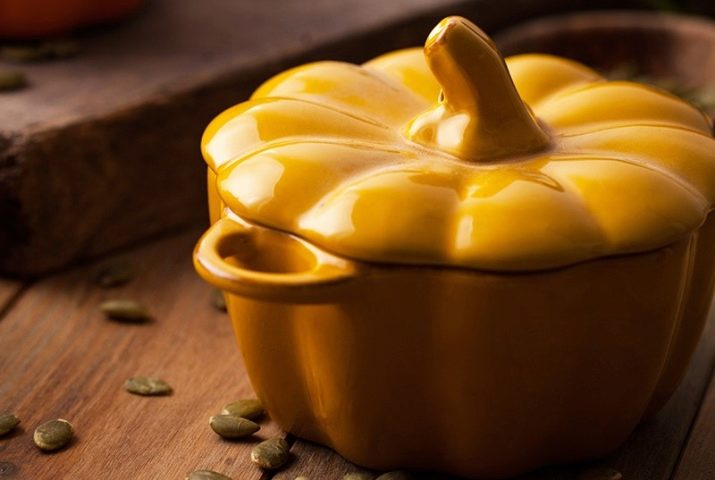
Some ceramic containers can be placed in the microwave (but not those with a metal outline).
- China. Can be part of a set of tableware, sold separately. There are luxurious models, expensive, elegant, in the spirit of the “royal table”. But you can find models of porcelain tureens made in minimalism. Porcelain is lighter and more tender than ceramics, but at the same time it is durable. Such dishes are resistant to temperature changes, are not afraid of acid and alkaline effects. But porcelain is different: porcelain has a creamy hue, hard is whitish and most durable, and bone is something between these two options.
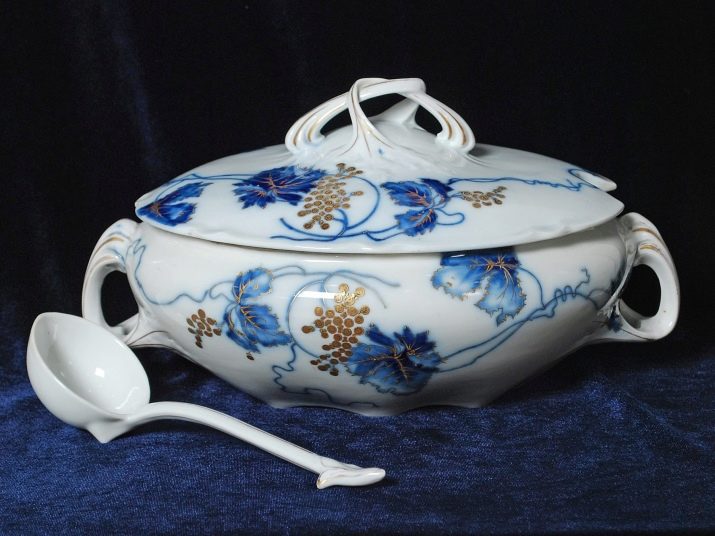
- Faience. At first glance, earthenware dishes are difficult to distinguish from porcelain, but even the materials sound differently. Faience is deaf and low, and it is also heavier, its walls are thicker.Material is afraid of temperature contrasts and can just crack.
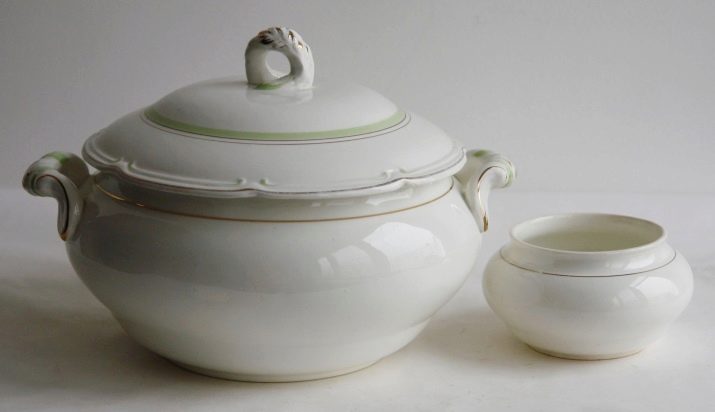
- Glass. Such items look somewhat simpler, more modest, but are convenient in that they can be heated in the microwave. Such containers are made of heat-resistant glass; for convenience, ears are attached to them. Glass tureens are good in that their contents are appetizingly peeking from behind the walls. For example, a bright pink chill or a thick okroshka looks picturesque in a transparent bowl.

- Silver. Such dishes are akin to family values: luxurious, aristocratic, raising the status of lunch or dinner. They should always shine and look perfect, otherwise the presentation itself is meaningless.
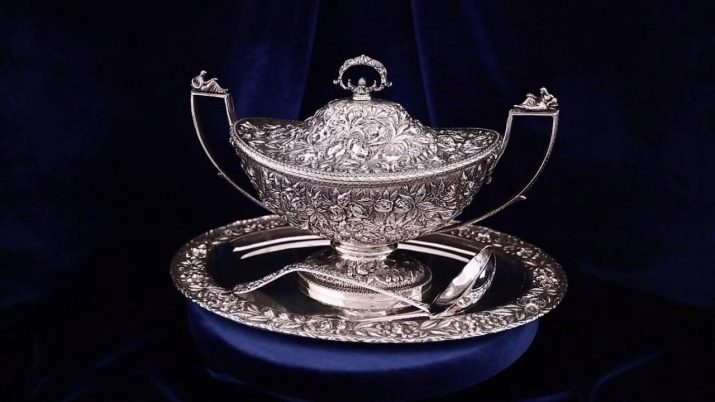
- Food grade plastic. In this case, we are talking about portioned plastic tureens: if the dishes are reusable, you can take them with you to work or to a picnic.
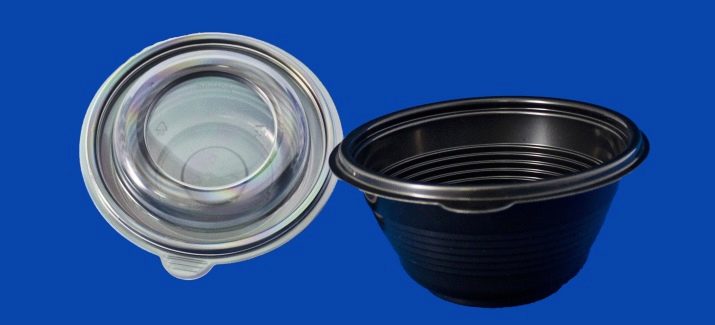
It is interesting that mistresses find alternative applications for tureens. In this dish you can store the remains of the first and second courses, it is convenient to serve pasta and dumplings. It is convenient to store baked pies in tureens (they will stay warm longer).
And even for serving salads, such containers are suitable.
Review of the best models
For those who know dishes, they know famous brands and types of dishes that are fashionable today, the choice of tureen turns into a search for the current option. I would like to guess the trend, get an interesting model in my collection.
Such a discerning customer will benefit from this review:
- "Gzhel" (Leander). Czech dishes offer many interesting options that are actively acquired by connoisseurs of porcelain in different countries. Round tureen made of porcelain “under the gzhel” holds 2.5 liters. Elegant, not bulky, recognizable by print print dishes will perfectly take root in your kitchen if you are close to Gzhel aesthetics or even if you just like the combination of white and blue.

- Tomato (Bordallo Pinheiro). Another recognizable model that will look good in a bright interior, possibly in an interior with rural motifs. For country lunches and dinners, this option is just perfect. Fits in a tureen 4.5 liters of the first dish. It is heavy, but the brightness and interesting design covers this conditional minus.
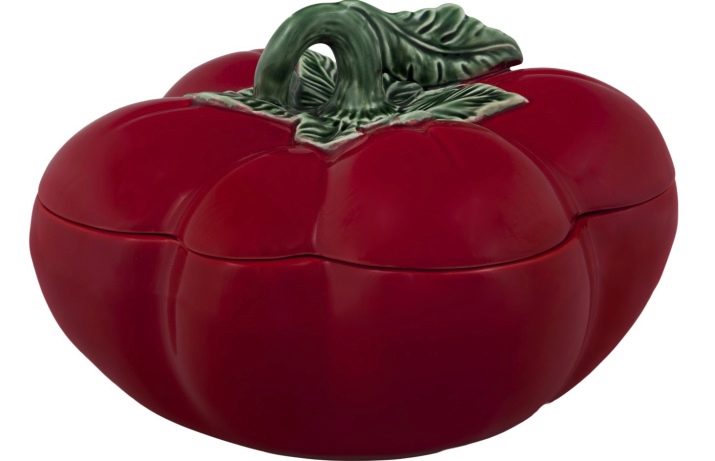
- "Blue Sky" (Tunisie Porcelaine). A sleek, contemporary 3.2-liter tureen made of porcelain. Its design is classic, because it is easy to “make friends” with other dishes from your collection.
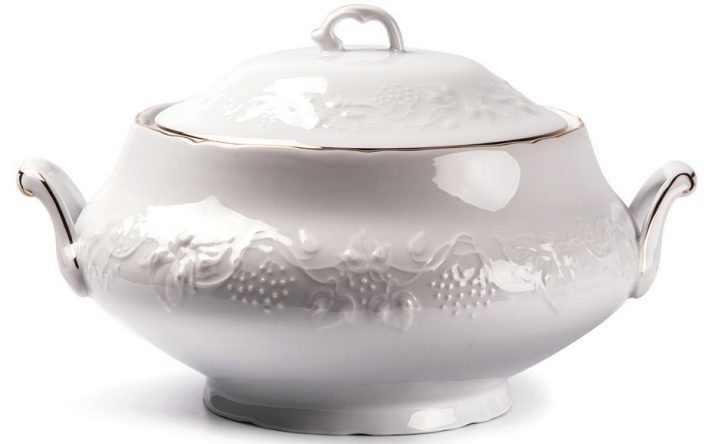
- "Food Warmers Line." And this is the famous tureen with heating, made of heat-resistant glass. It is equipped with a steel stand. It is the heating that allows the contents of the tureen to not cool for a long time. The set includes a stainless ladle.
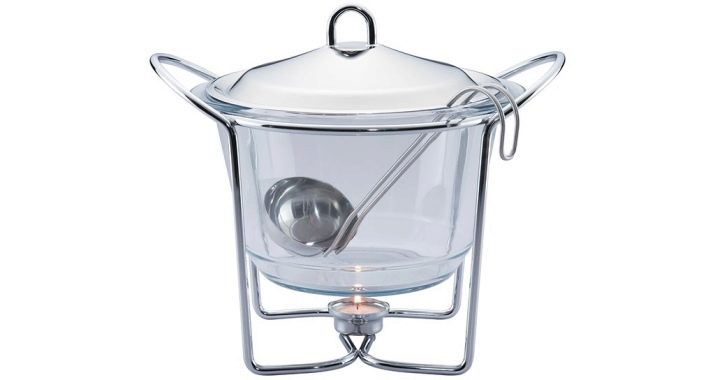
- Set of tureens Luminarc. These are portioned tureens with handles, 4 of them are included. It is acceptable to use dishes in a microwave oven, as well as in a dishwasher. Products of soft milk color and laconic form will be a great addition for lovers of classic serving. This company also offers black dishes.
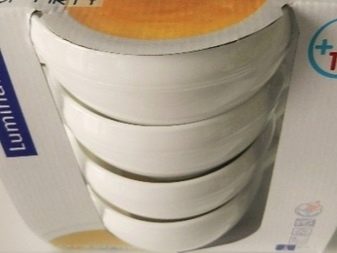
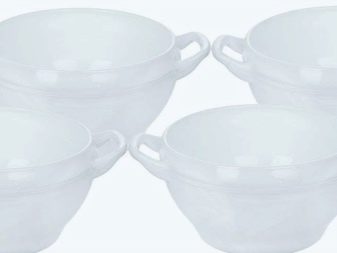
- Set of loraine tureens. These are ceramic portioned tureens, which are made on a stand. The set of 5 items. The material of manufacture is ceramic. The original design allows the use of tureens both daily and in preparation for the festive table.
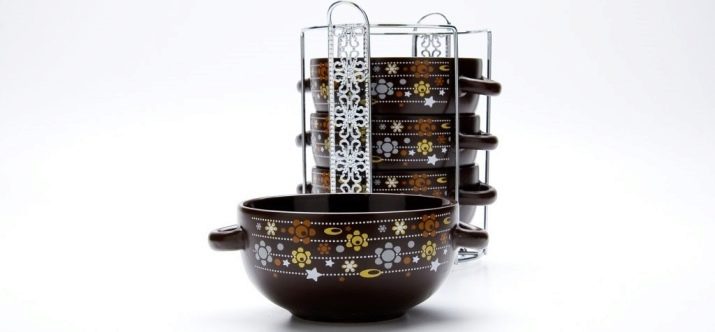
It is not necessary to look for branded dishes: in a modest little shop or in the department of ceramics and pottery you can find very interesting options. Some housewives prefer to have two tureens - one is used every day, the other is used for special occasions.
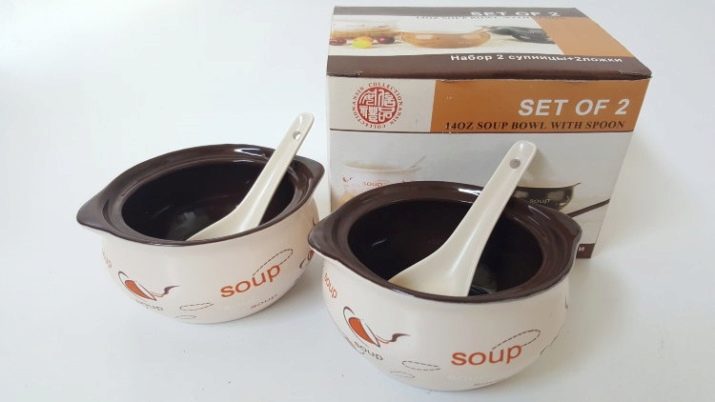
The second option may be more expensive.
How to choose?
Tureen remains the main dish for serving first courses. If you honor traditions and do not want to abandon this beautiful ritual, it should take pride of place in a cupboard or a cupboard for dinnerware.
- The size. Consider which size is best for your family. There are miniature models in 2-2.5 liters. They look compact, suitable for serving on a small kitchen table, it is unlikely that excess will remain in such dishes.If you expect that at the table on weekends or holidays it will be crowded, it is wiser to take a roomy model with a volume of 3.5 liters or more. Then the first is enough for everyone and the soup will conveniently pour over without a trace from the cooking pot.
- The form. Adherents of the classics buy rounded tureens with handles (possibly twisted), a lid with a hole for the soup ladle. If your interior is minimalistic, you appreciate the geometry and simplicity of forms, it will look better in it tureen, close in shape to a square. Glass tureens are often triangular in shape and are suitable for serving glass.
- Decor. Today, various branches of country style, rural motifs, unpretentious interior items are in fashion - if this is old, then inexpensive, not exquisite vintage, but retro-cute to the heart. Clay tureens with floral ornaments or patterns will look great in such an interior. The colors of the earth prevail - beige and brown, terracotta and others. Some craftswomen paint such dishes themselves, using flowers, twigs, birds, butterflies as decor.
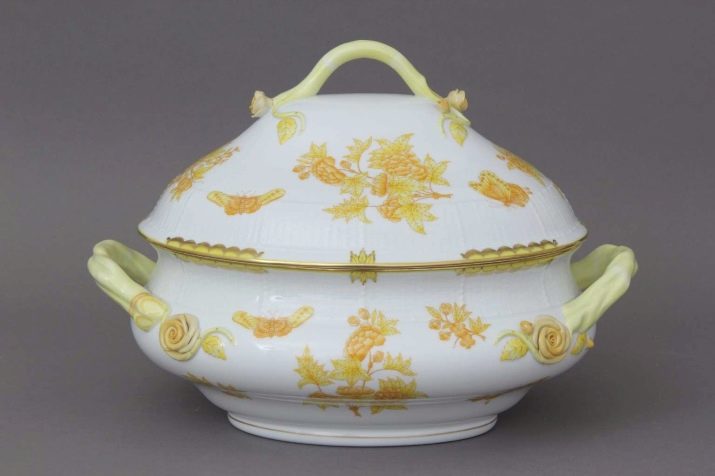
If you follow the interior fashion, you probably know that today the lag direction is actively developing. This concept is a feature of the Swedish national character. If you translate it literally, there will be something "just right, adequate." This word contains prudence, rationality. Today, this word in terms of interior and housekeeping means restraint, modesty, and the absence of excess.
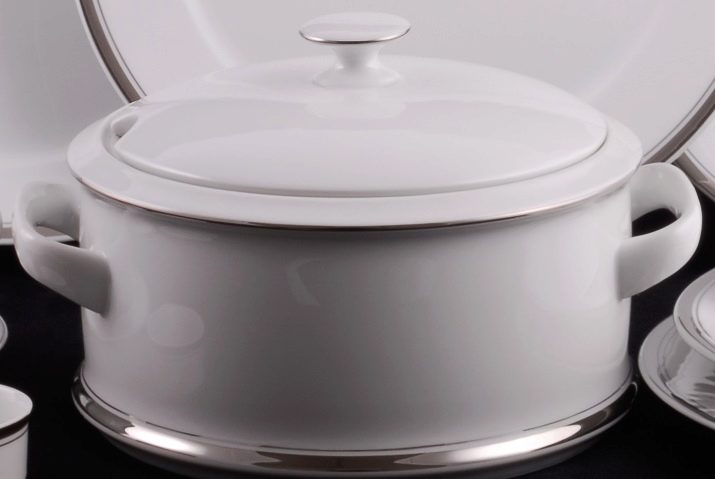
It is believed that the concept comes to grips with the consequences of the era of consumption.
And if this trendy trend is close to you, then stick to it in terms of utensils. Do not buy something only for the sake of fashion, do not spend money on branded items that might be needed in another, but take care of what you have. The silver tureen looks very impressive, but such spectacularity is far from always appropriate. Even the modest ceramic or clay tureen that you inherited from your older relatives can last you a long time.
Put it in order, clean it to a shine, and one day serve it for a family dinner - a new life for old dishes may be the best solution.

By the way, serving soup to guests is a tradition that is slowly being forgotten. But for a dinner party or dinner, such a beginning is quite appropriate. If the soup is hearty, thick, the second course can be light (and vice versa). Thanks to the mere introduction of tureens into the familiar set of tableware, a pleasant tradition may appear in your surroundings to gather on the occasion for a “specialty borscht with donuts” or “mother's hodgepodge”.
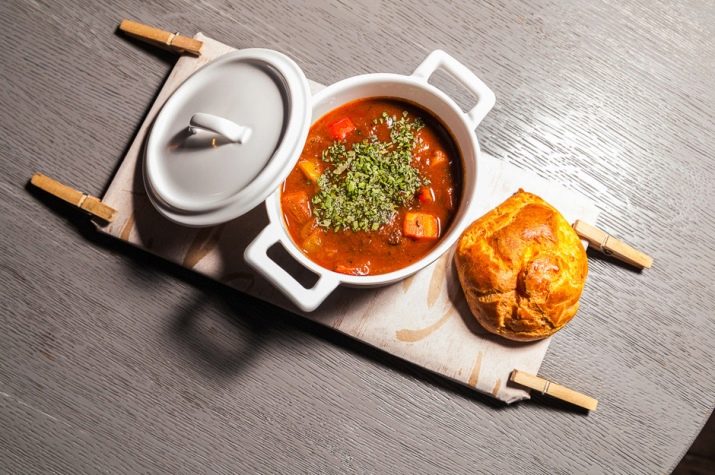
See the review of the tureen in the video below.
